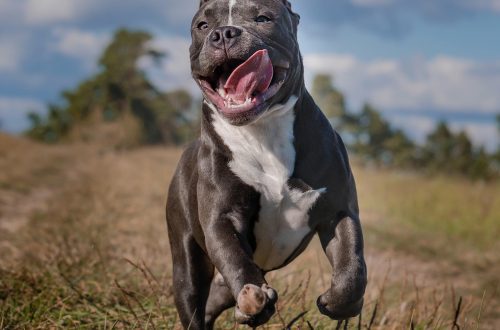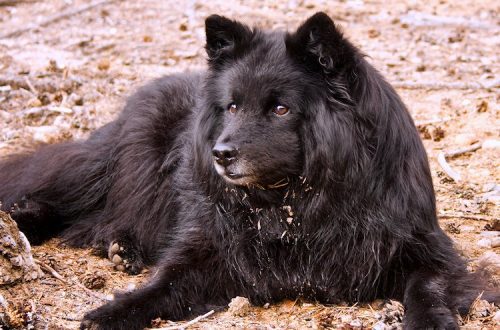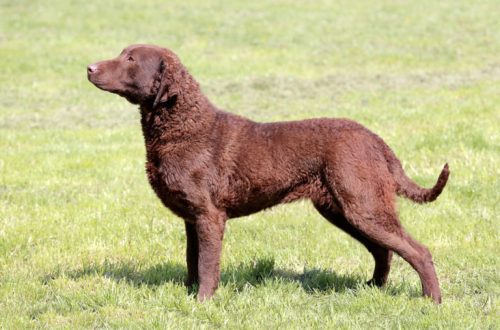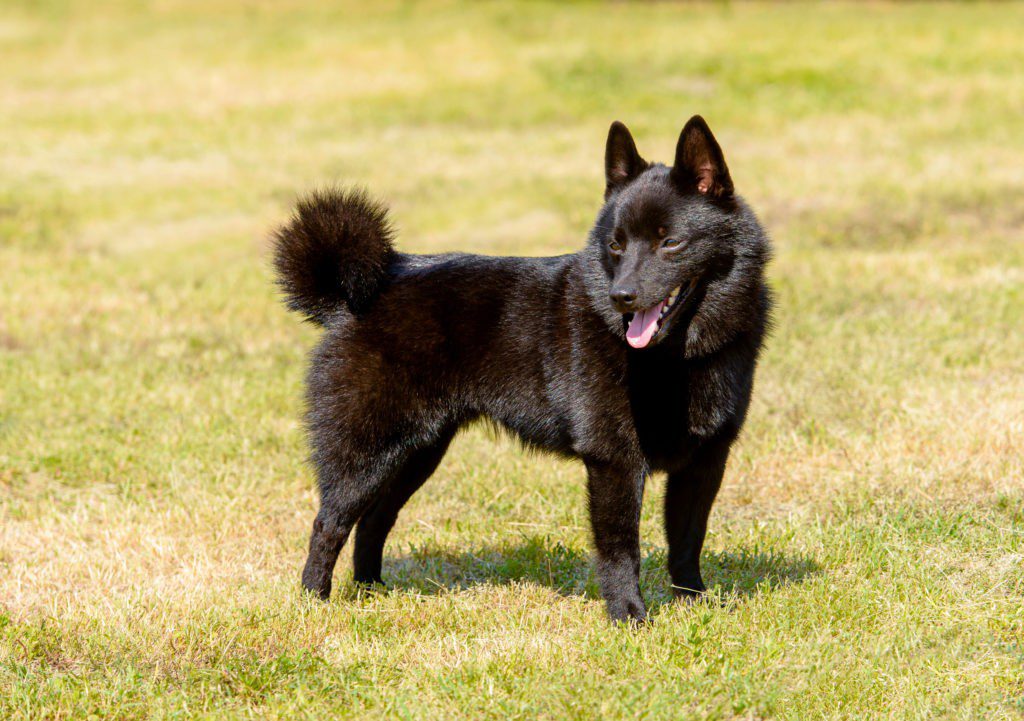
Schipperke
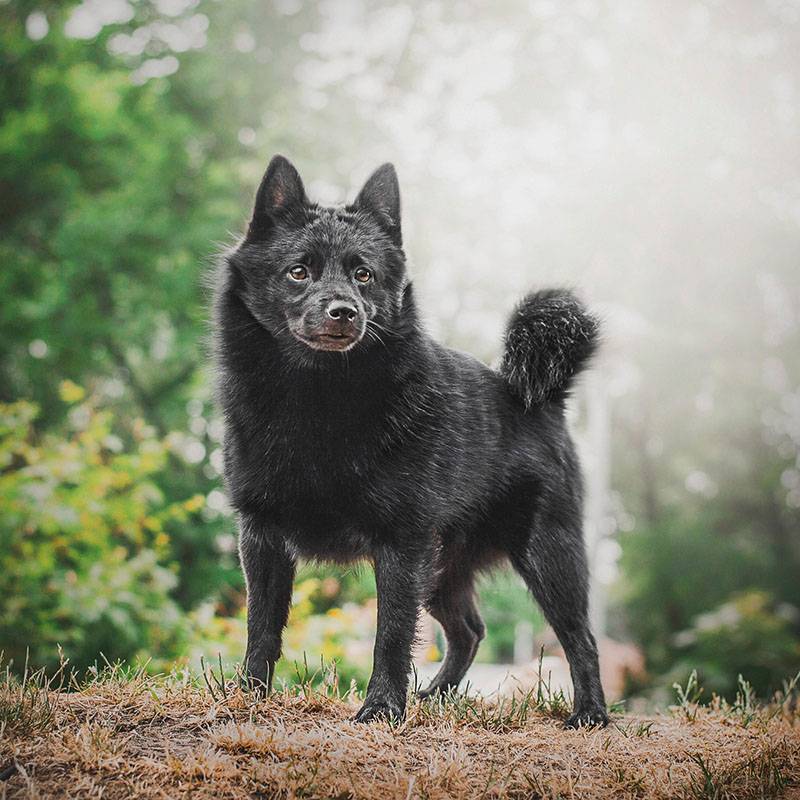
Contents
- Characteristics of Schipperke
- Basic information about Schipperke
- History of the Schipperke breed
- Description of the breed
- Schipperke character
- Breed Training Tips
- Schipperke content
- Food
- Health
- Schipperke photo
- Who is this breed for?
- How to choose a puppy
- Photos of Schipperke puppies
- Owner experience
- Schipperke cost
- Schipperke – Video
Characteristics of Schipperke
The Schipperke is a companion dog with a characteristic black coat. Affectionate, mobile. He loves all members of his family very much.
| Country of origin | Belgium |
| The size | small |
| Growth | 25-33cm |
| Weight | 3-9 kg |
| Age | up to 14 years old |
| FCI breed group | Shepherd and Cattle Dogs other than Swiss Cattle Dogs |
Basic information about Schipperke
- The Schipperke closely resembles the Belgian Shepherd in appearance . Researchers believe that these two breeds had a common ancestor.
- Despite the small size, the dog has the qualities of a service dog.
- The International Cynological Federation allows the breed to have only one type of color – black. The British allow the Schipperke to have a golden coat, and according to the American standard, such a dog can also be blue, chocolate and dark tan. In addition, American-type pets look more broad-boned, while English-type pets look more graceful.
- If you do not engage in the socialization of the animal in a timely manner, then it will see a potential threat in all strangers and pets. Do not protect the dog from communication, and he will be calm in any situation.
- The Schipperke is a breed that is considered quite healthy. Even colds are a rarity for them.
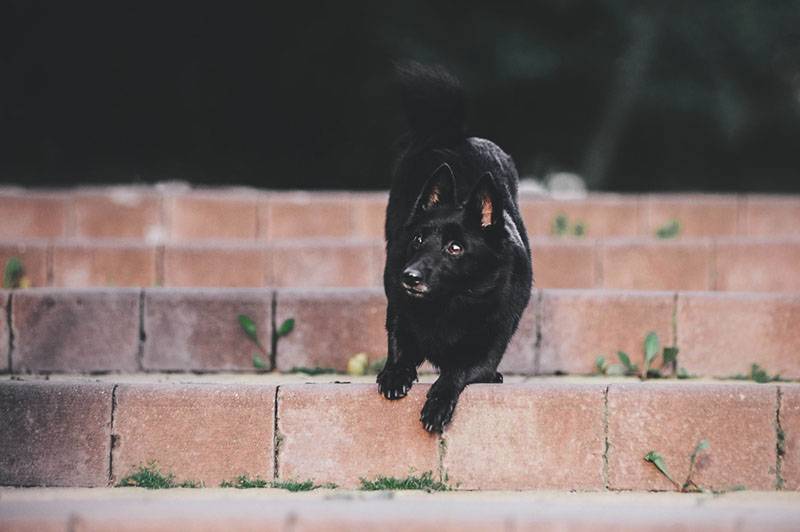
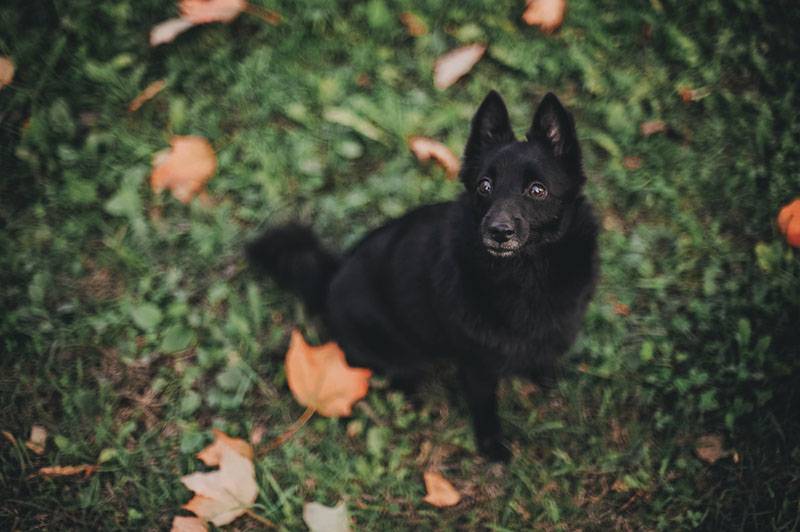
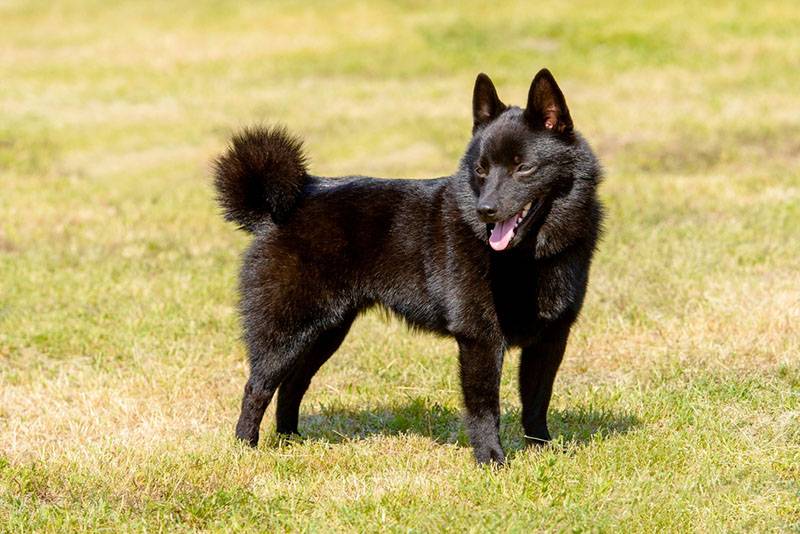
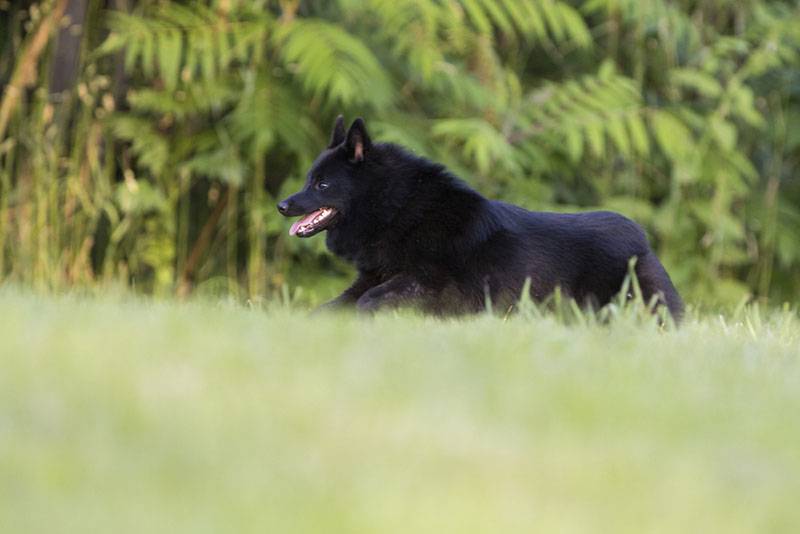
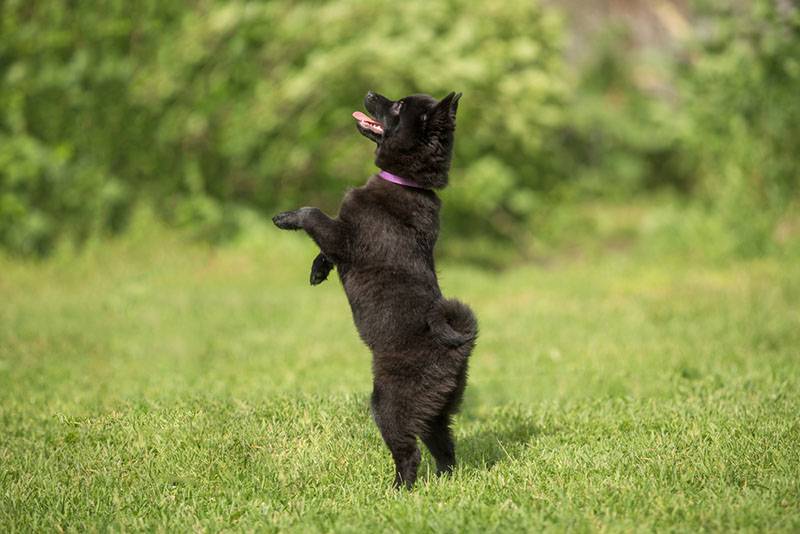
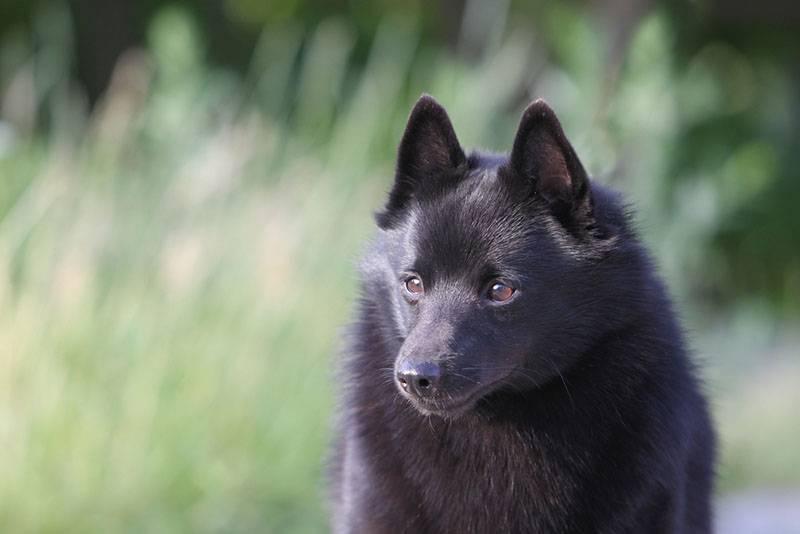
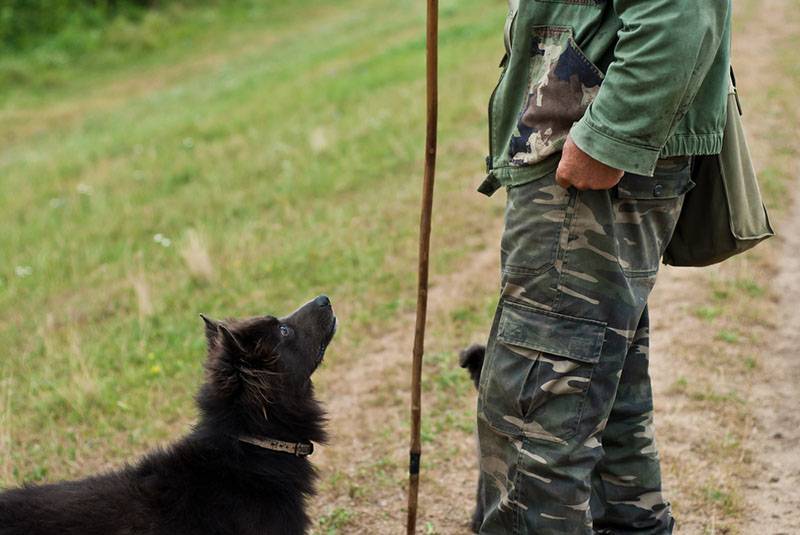
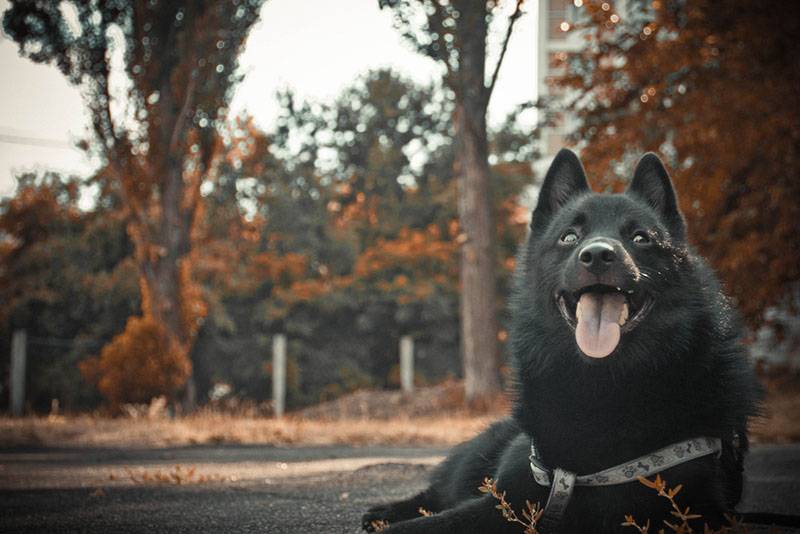
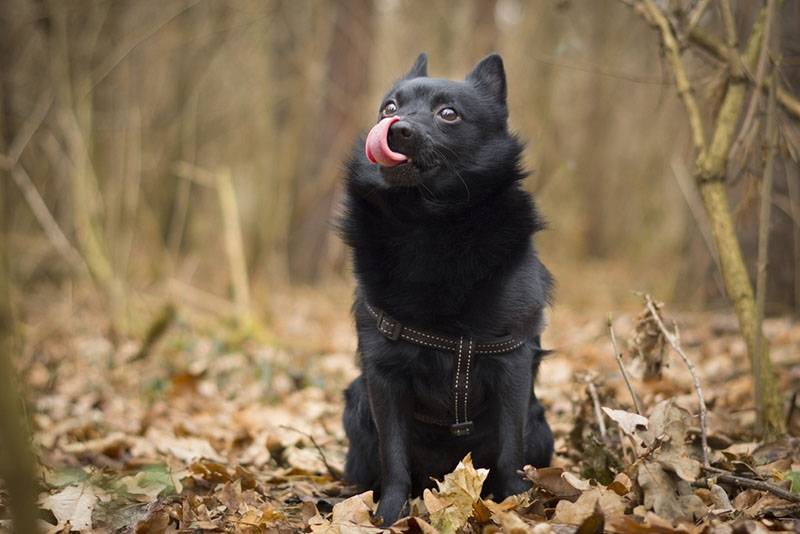
| PROS Small size; High level of intelligence; Excellent watchmen and guards; Easy to get along with cats and dogs; Affectionate and devoted. | CONS Sometimes they are overly active; Able to be persistent; Poorly tolerate loneliness; They need regular physical activity. |
History of the Schipperke breed
In fact, the name of the breed is pronounced “schipperke”, which means “little boatman” in Flemish. There is also an assumption that the name comes from the Belgian “schipper”, which means “shepherd”.
Before the official name was adopted, such animals were called “spitz”, which means “dog with pointed ears.”
Some scientists suggest that these dogs appeared around the 16th century. The shoemakers of Brussels and the workers of the Sanjari district often kept pets of small size and characteristic black color for catching rats, mice and moles. In addition, they did an excellent job with the duties of shepherds. They also helped people working on barges, guarded their property and also fought rodents.
A large role in the development of medium-sized breeds was played by the law prohibiting Europeans from having large pets.
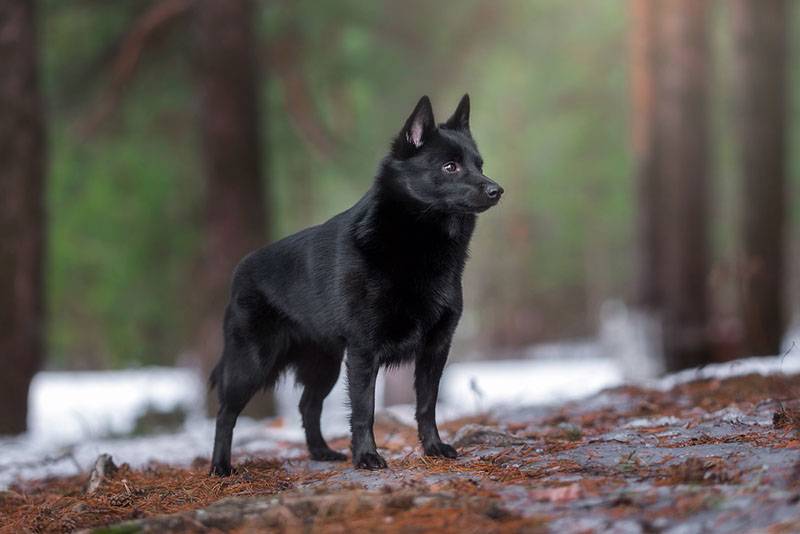
At the end of the 19th century, the Belgian cynologist Charles Hughe published a work in which he describes in detail the black wolf-shaped dogs that were very common in Belgium since the 15th century. As the specialist notes, these animals were of various sizes: the largest, of course, was a shepherd’s shepherd dog, and the smallest, which helped people in the fight against rodents, most likely was precisely the ancestor of the Schipperke and Groenendael .
In the second half of the 19th century, the nobility paid attention to these small dogs. Queen Marie Henrietta adopted several of these pets and thereby introduced the fashion for the breed.
In 1882, the dog was shown for the first time at an exhibition. Starting in 1887, Schipperke began to be actively exported to other states. Representatives of the breed could now be found in both the UK and America.
In 1888 the first Club was organized, and in 1889 a standard was issued. The specialists of the organization had to make considerable efforts to form a single breed type.
These black dogs came to Russia relatively late. And even now the breed cannot be considered super popular here.
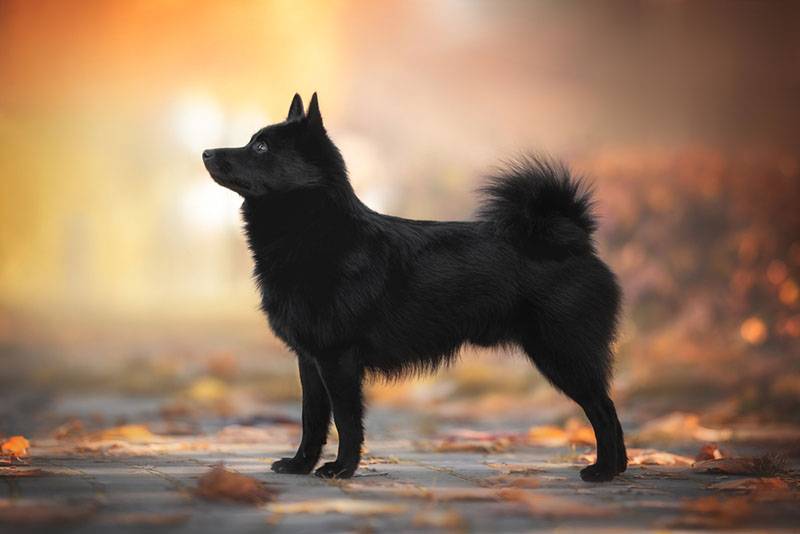
Description of the breed
Schipperke (or Schipperke) is a small dog. This is a shepherd dog in miniature, the physique of which is distinguished by harmony and muscularity. The case format is more like a square. It is short, looks stocky and well balanced.
The coat of the dog is special: the hair is straight, there are a lot of feathers. The sexual type is expressed explicitly.
Head
She has a wedge shape in the Schipperke. Her length is moderate. Pretty wide. The forehead narrows noticeably towards the eyes. When viewed from the side, the forehead looks slightly convex. The stop is clearly visible, but should not be too sharp.
The nose is small. Pigmented. Its color can only be black.
The lips are not saggy, fit snugly to the teeth, painted black. Jaws are strong. Acceptable scissor bite. If the dog has a straight bite, this is also not a marriage.
Eyes
They have a small size. Their shape is almond-shaped. They can neither be prominent nor set too deep. Their expression in the Schipperke is lively and mischievous. The eyelids are painted black.
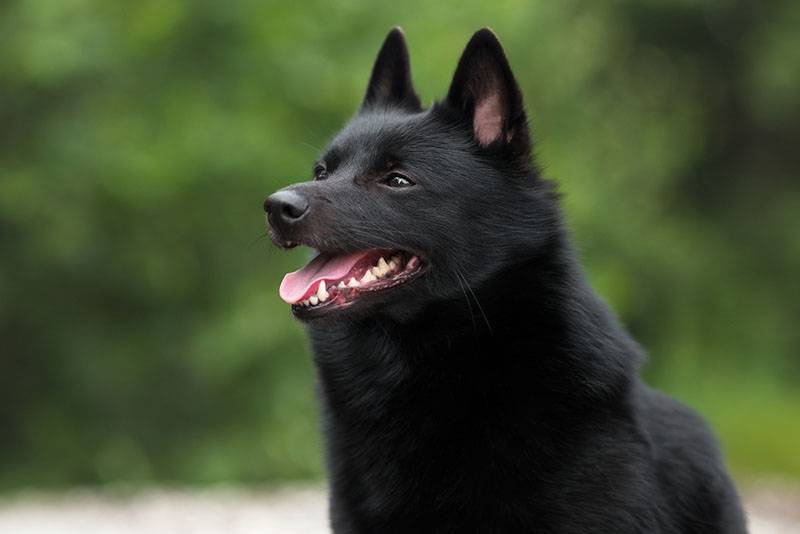
Ears
Very small size. standing. Their shape is triangular. Ideally, this “triangle” should be equilateral. Postav – high. The ear pad is durable. The dog moves his ears a lot.
Neck
Looks strong and muscular. Due to the large volume of decorating wool, it looks very wide. The dog holds her high. She rises especially high on her shoulders when the Schipperke is alarmed by something.
Frame
Has well developed muscles. Chunky, but can never seem unwieldy. The Schipperke’s back looks straight and even. The back of the croup is rounded.
The chest is lowered to the level of the elbow joints. The ribs are convex. The abdomen is moderately tucked up.
Tail
The Schipperke has a high waist. Often, representatives of the breed are born tailless or with short tails (that is, very short). This is not considered a significant marriage.
When the animal is calm, it lowers it down. A slight bend is allowed. When running or walking, the Schipperke’s tail is usually in line with the back.
If the tail is carried over the back or curled into a ring, this is considered a defect.
limbs
The legs of the Schipperke (or Schipperke) look straight and parallel to each other.
The thighs are strong, with well-developed muscles. Due to the abundance of wool, they seem to be more powerful than they really are.
Schipperke’s paws are small, compact. Their shape is round. The fingers are collected in a “lump” and resemble a cat’s. The nails are short. Can only be painted black.
Gait
When the Schipperke changes to a trot, it moves easily and steadily. The back should remain straight while walking or running. The tracks left by the dog on the ground are parallel to each other.
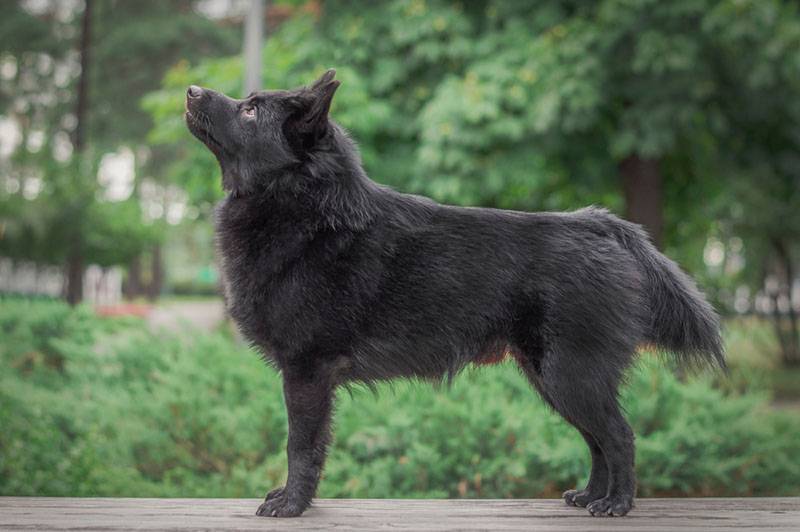
wool cover
The guard hairs of the Schipperke look thick, straight and rather coarse. The undercoat is soft and dense, perfectly protecting the dog from the cold.
The Schipperke has a short coat of wool only on the ears, head, and front of the legs.
Abundant feathering on the neck, forming into a kind of “collar”. In males, it looks more plentiful and thicker. Between the forelimbs, the coat is elongated, often called “jabot”. On the hips of the Schipperke, the hair is also thick and voluminous. On the tail – fringes.
Schipperke color
The Schipperke breed standard allows only one color – plain black. The axial hair can only be black, the undercoat is black or dark gray. But the undercoat of a different color from under the black axial hair should not be visible.
The appearance of gray hair in old age on the muzzle of a Schipperke is not considered a defect.
Size and weight
According to the standard, the height of the Schipperke should be 25-33 cm.
The average weight of an adult dog is 3-9 kg.
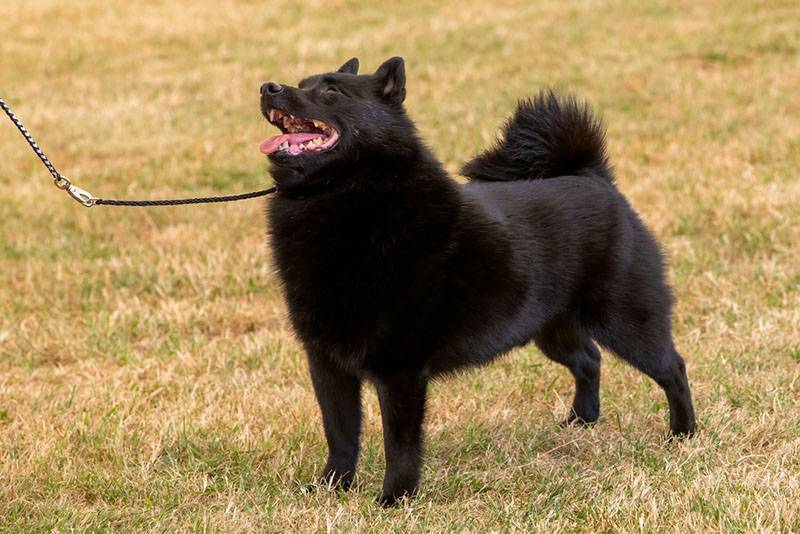
Schipperke character
The Schipperke is a very active dog and rarely sits still. It is always interesting for her to be in the very center of events.
The pet is not at all a decorative dog, despite its small size. The Schipperke is an excellent watchdog. His character is very similar to the character of service shepherd dogs. The dog will protect his family in any situation. It is also able to protect the territory.
If you have long dreamed of a shepherd dog, but live in a small city apartment, then the Schipperke is exactly the breed that you need.
With strangers, a well-mannered dog behaves with restraint. She trusts only those whom she sees not for the first time.
Such a dog can be started in a house with small children. Schipperke is tolerant of the pranks of the child, will play active games with him.
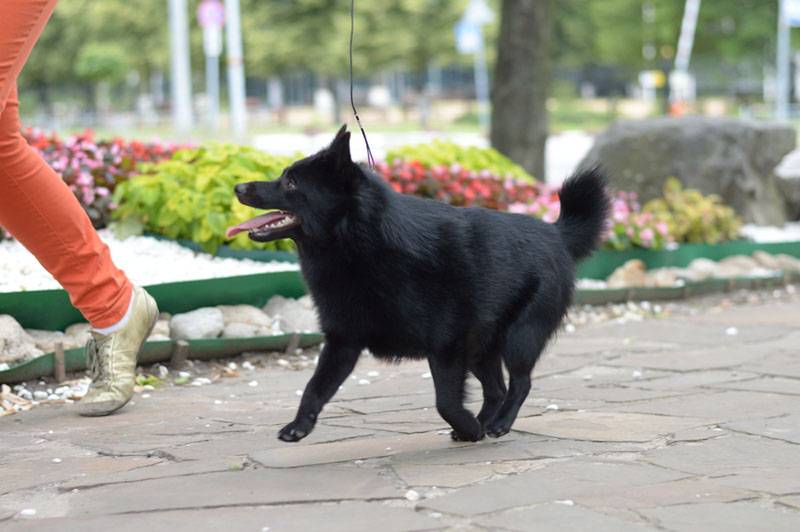
The breed does not tolerate loneliness well. It is undesirable to leave this sociable pet in an apartment alone for a long time. He is very bored in the absence of people. He needs attention, affection.
The Schipperke are very active. They love to run and jump. They need regular exercise to keep fit. Schipperke will support any outdoor games: running with obstacles, searching for a hidden object, playing ball, etc. Can participate in various dog sports.
You should only let your dog off- leash in a well-fenced area. During the walk, constantly monitor the movement of the pet, Schipperke tend to pursue any living creature and can rush in pursuit of it.
They are characterized by increased energy. If you don’t provide enough exercise for the schiperka, then the dog will most likely start spoiling things in the house, trying to get rid of the excess energy on its own.
Schipperke’s intelligence level is quite high. That is why physical activity must be changed to activities that develop the dog’s intelligence. You can offer the animal a puzzle, a game of “thimbles”, etc. In order for the dog to participate with pleasure in such activities, you need to use the treat you want, his favorite. Sometimes Schipperke tend to be stubborn. To make them happy to start learning, try to find an individual approach to them, to interest the animal.
They bark quite often. But usually not without reason. Schipperke, like a true watchman, is always on the alert. That is why the voice lets the owner know that he senses danger.
To other pets – dogs and cats – Schipperke usually treats calmly. Especially if they grew up in the same family. An exception may be birds, rodents, which the dog often regards as prey.
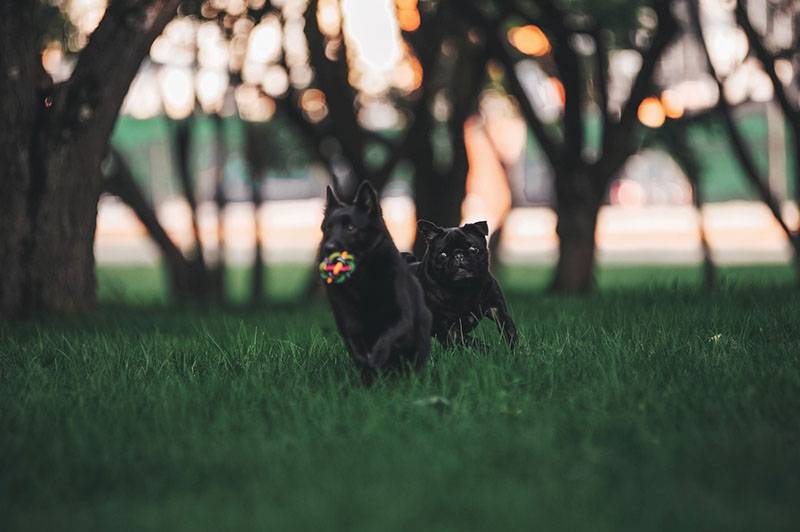
Breed Training Tips
Schipperke is smart and quick-witted, so she can absorb new information quite quickly. From the first days of the appearance of a puppy in the house, you can begin to educate him.
Do not spoil him unnecessarily, for example, allowing him to sleep on the master’s bed. Having allowed the dog to spend the night in your bed a couple of times , you will no longer wean it from such a habit.
The whole family in which it lives should participate in the upbringing of the animal. If it was decided not to let the dog on the bed, sofa, not to feed at the table, then absolutely all family members must comply with these rules. If at least one will indulge a pet, education will become meaningless.
In the learning process, the owner must be demanding and persevering. Always make sure that the shipperke obeys every command you give. If the dog refused to do something, and you gave in to him, then you should not expect obedience from him in the future. The dog will fulfill the requirements of the owner only when she herself wants it.
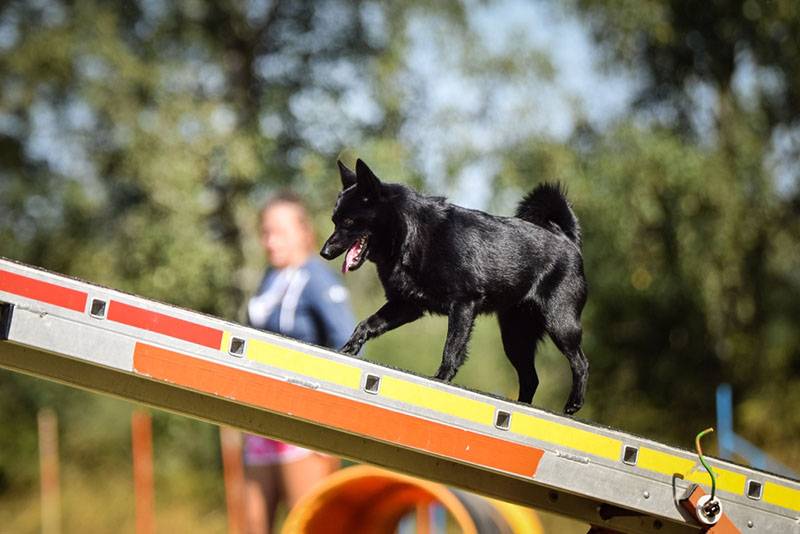
A puppy at the age of 2-3 months is already able to master basic knowledge: he can be taught to go to the toilet on a diaper , sleep on his sunbed , eat from his own bowl and not beg for food at the table.
The nickname for the dog is chosen short, easy to pronounce. This will make it easier for the animal to remember. Constantly call the baby to you, call his name clearly and calmly. Don’t scold him if he doesn’t understand you right away. Reward your dog with treats if he does everything right. The promotion should follow immediately after the owner’s requirement has been met.
It is better if the training takes place in the form of a game.
This will keep your pet’s attention for a longer time. Puppies should not be overloaded: classes last 10-15 minutes. With adults, they have been doing more – about half an hour.
Training is a regular process. It is better if the classes take place daily. There should not be long breaks between them.
If you understand that you can’t teach your dog the rules of behavior and basic commands , do not hesitate, contact the professionals. Often such animals are prone to stubbornness. For dog breeders who have never kept pets, it is better not to start this breed.
Mastering the general training course is a mandatory process. It will allow you to achieve the correct behavior of the animal both at home and on the street. For example, if the dog tries to run away, the owner will be able to immediately stop it with the “Come to me” command.
Training can be done both at home and on the street. The main thing is to choose a quiet place where no one will distract you or the animal. As soon as the dog began to react worse to the demands of the owner, this means that he was tired. Take a short break, let him rest. Redirect your dog’s attention to something else.
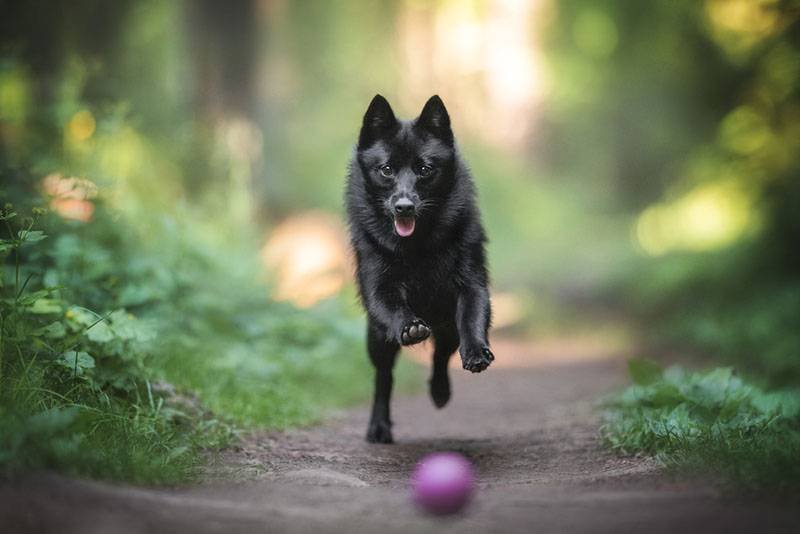
Schipperke content
This breed is kept both in a city apartment and in a country house. However, you should not settle in a Schipperke enclosure: the dog is bored there without constant communication with a person.
Get ready for frequent and very active walks in the fresh air. The dog needs to be constantly occupied with something so that it splashes out its energy. Schipperke is happy to go with her family to nature. She loves to swim in ponds, dig the ground.
The thick coat of a dog requires care. Comb it regularly – 2-3 times a week with a special brush. During periods of active molting Schipperke, such a procedure may be needed even more often. Combing will reduce the cleaning time in the apartment: if the wool is not removed with a slicker, it will be everywhere in the house – on carpets, furniture.
Bathing the animal is very often not necessary. Usually the procedure is required once a month. To do this, you need to purchase special dog shampoos. Human pet care products are not suitable. If used regularly, they can irritate your dog’s skin.
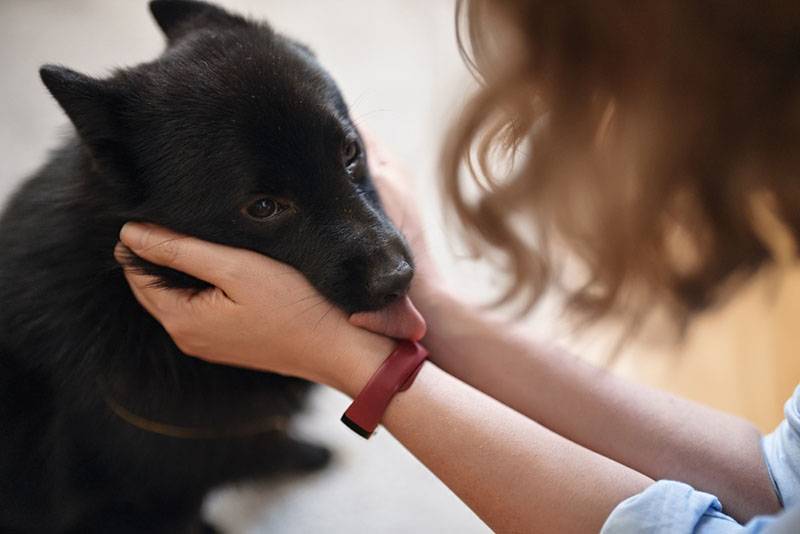
Teeth are cleaned daily. This procedure will avoid the appearance of plaque, tartar and caries. To clean the oral cavity, it is recommended to use veterinary toothpastes and brushes for dogs.
The ears of pets are regularly cleaned of accumulated sulfur and dirt. Usually this procedure is required 1-2 times a week. To do this, you need to use special lotions. Do not use boric alcohol, peroxide, cotton swabs. Too deep to climb into the auricle is not worth it, cleansing should be superficial.
Paws after each trip to the street are cleaned of dust, sand and dirt. In the summer, it will be enough just to rub them with napkins. In autumn and spring they are washed with warm water. In winter, it is imperative to use soap, which will help remove chemical reagents used in cities against ice from the animal’s skin. Waxes for dogs are used to protect against aggressive chemicals and cold. They are applied to the paws immediately before going outside and removed immediately upon arrival home.
It is necessary to cut the claws about once every 10-14 days. Animals that walk a lot on asphalt usually grind their claws on the road, and they do not need such a procedure at all.
It is necessary to teach dogs to carry out any hygiene procedures from puppyhood. The learning process must be reinforced by rewards. If the puppy reacted calmly to the procedure, be sure to encourage him – give him his favorite “yummy”, praise him, stroke him.
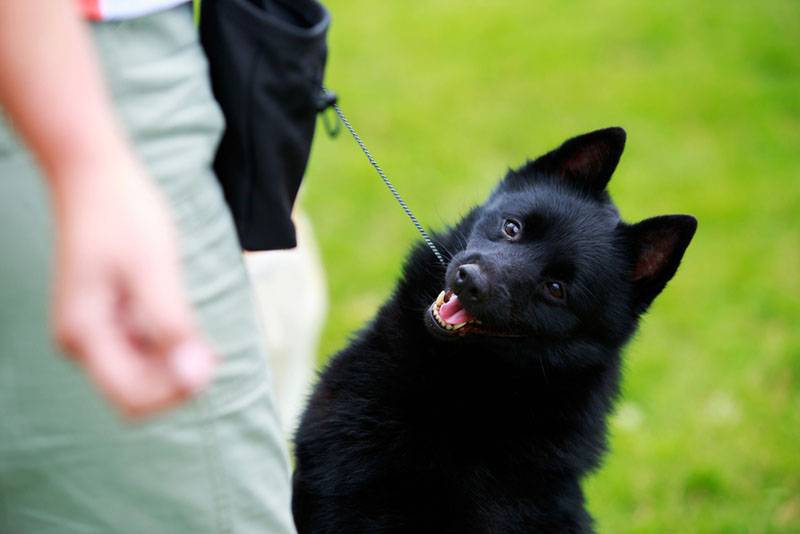
Food
Choosing a diet for a pet is a rather difficult and responsible step. That is why it is recommended to seek help from a specialist to draw up an individual diet for a dog. Only a professional nutritionist can help develop a nutrition plan that will be appropriate for her age, weight, activity level, health status.
Each dog breeder can choose one of the existing feeding options for the dog : natural food or ready-made industrial rations.
Natural feeding is often quite a difficult option, especially for owners who have never calculated the calorie content of meals on their own. The nutritionist will calculate a certain rate of proteins, fats and carbohydrates, and also determine how many calories the pet should receive every day. But the dog breeder will weigh the products, cook them, calculate the calorie content of each serving on his own every day.
Industrial rations are ready-made feeds that are considered to be fully balanced.
Specialists calculated the exact balance of proteins, fats and carbohydrates for the dog breeder. The owner only needs to measure out a portion of a certain weight and give it to his pet. In this case, the daily rate is also calculated by the nutritionist, based on the activity of the animal, its state of health, etc.
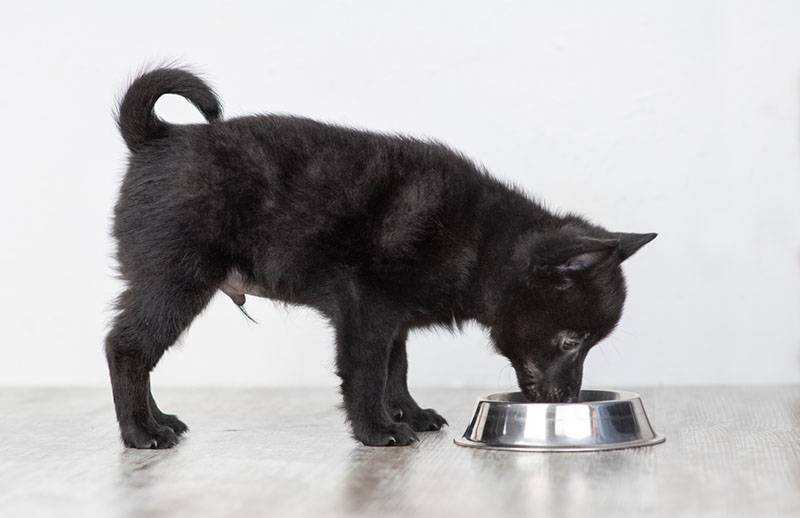
Vitamins and minerals are extremely important for a dog. They are either consumed separately, or they are already part of the selected industrial diet. Vitamin and mineral supplements are available in complete feeds. Incomplete industrial rations and natural foods are supplemented with vitamins and minerals separately. Only a specialist can prescribe vitamin complexes.
Since dogs are zoophagous, that is, carnivorous, the basis of their diet for any type of feeding will be protein. Pets require much less carbohydrates. Fats are also important. Their daily norm is 4-5 ml per day.
If there is a need to change the diet, then this should be done gradually over 5-10 days. Gradually add new food to the old food, monitor the condition of the dog. Check if the animal is allergic to the new type of food. In case of problems, please contact your veterinarian.
The regime is important to follow. Your pet should eat at the same time every day. Complementary foods are highly undesirable. They often provoke a set of excess weight in a pet.
As rewards, you should not use harmful types of food: sausages, sweets, sausage, rolls. It is better to take dry food for this. They are very convenient to use, they are easy to take with you for a walk.
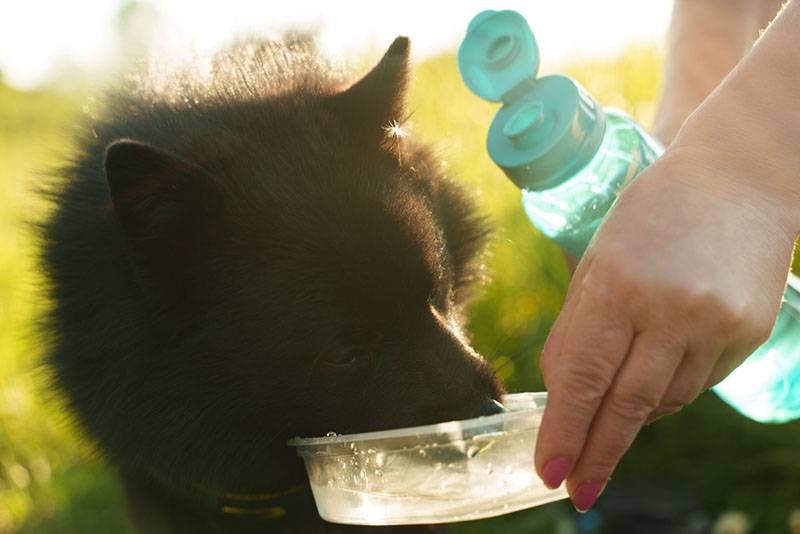
Health
The Schipperke is a breed of excellent health. Subject to proper maintenance and a well-chosen diet, it is able to be active and mobile until old age.
According to studies conducted by the British Club, the average life expectancy of such dogs is approximately 13 years. In addition, there are cases when Schipperke lived to be 18 and 19 years old.
Very harmful to overfeeding dogs. They can lead not only to the appearance of excess weight, but also to serious health problems: diseases of the joints, heart, lungs, and digestive organs.
Do not neglect regular examinations at the veterinary clinic, treatments for internal and external parasites. Your dog should be vaccinated on time, according to the schedule.
Of great importance is the choice of a conscientious breeder. If a specialist works honestly, he will never use in breeding individuals with serious genetic disorders and diseases.
Schipperke photo
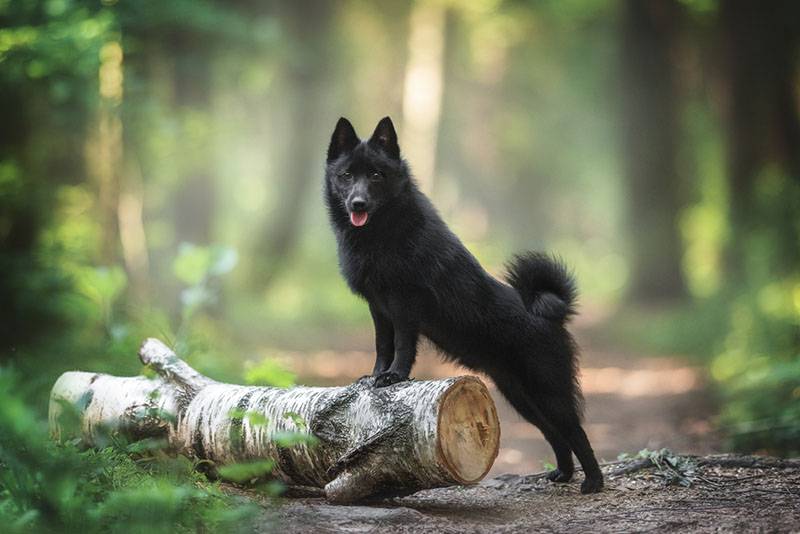
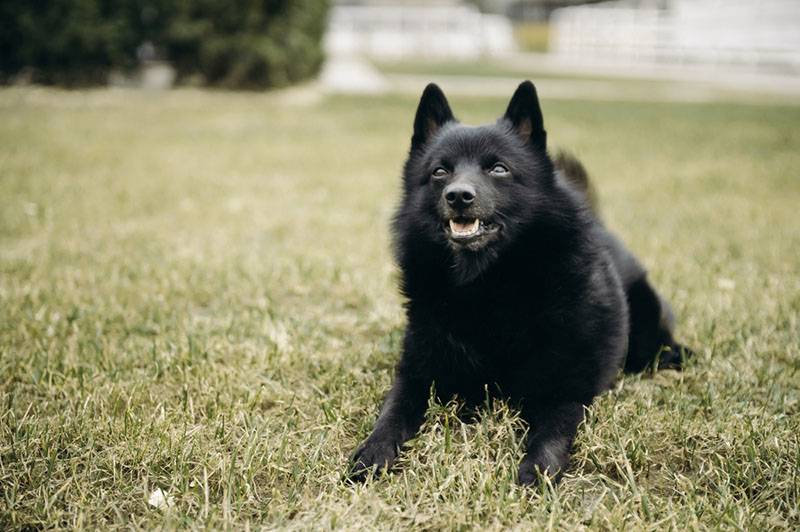
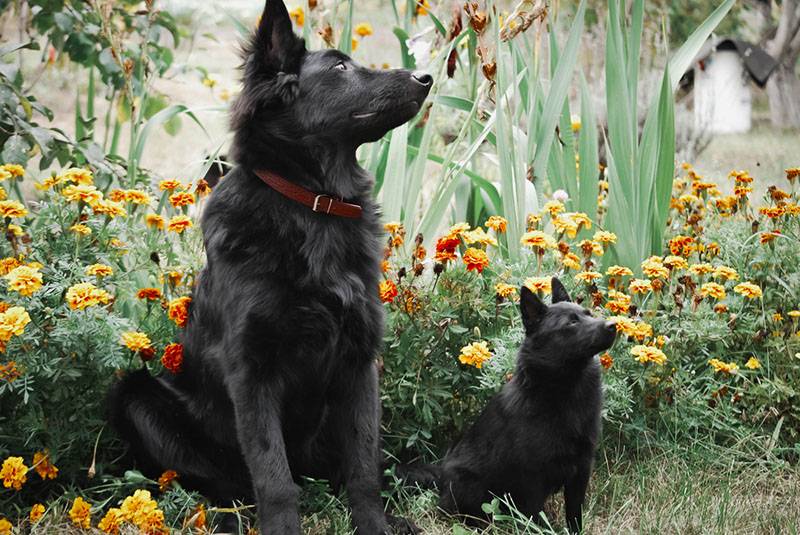
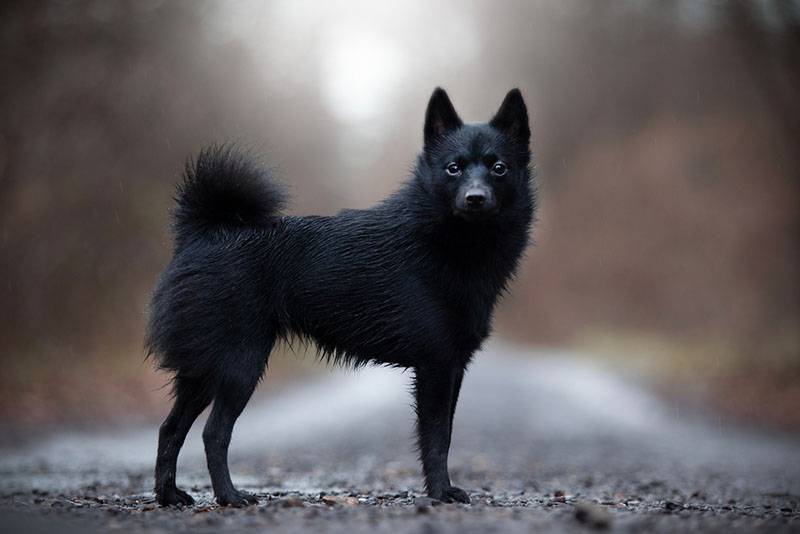
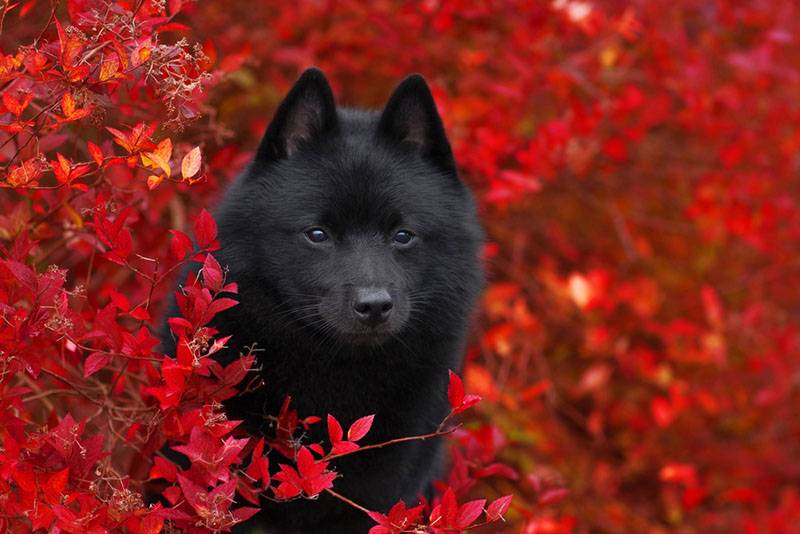
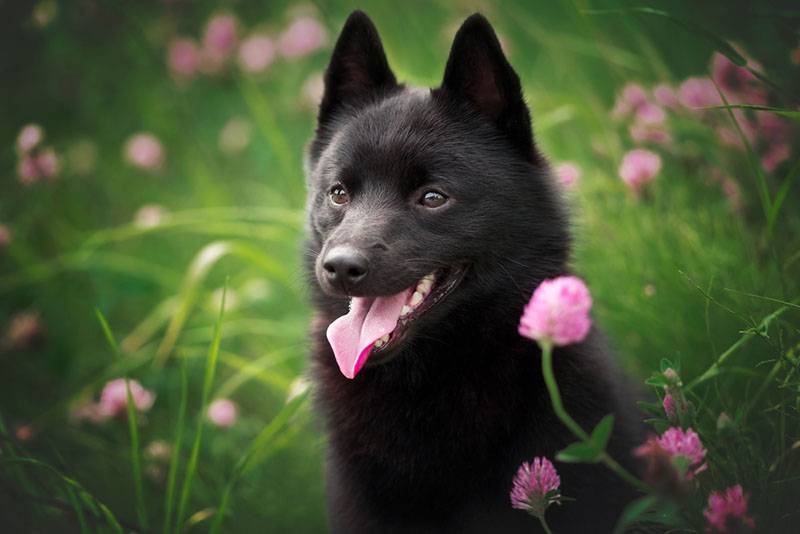
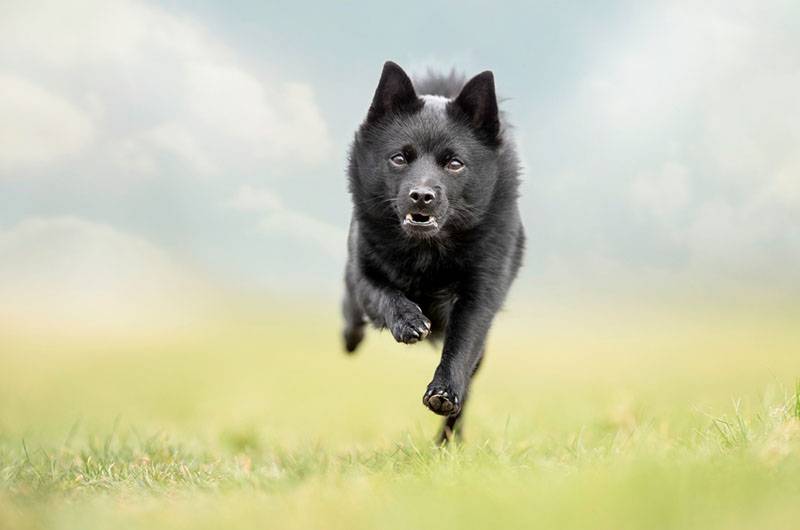
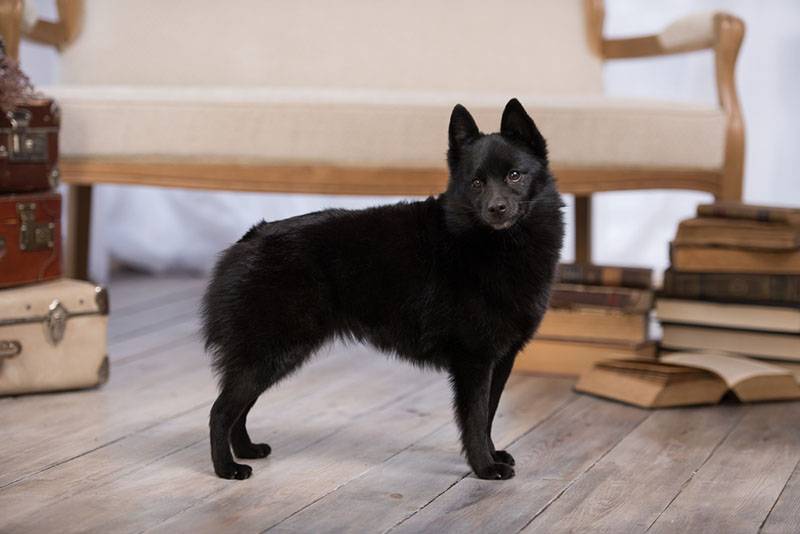
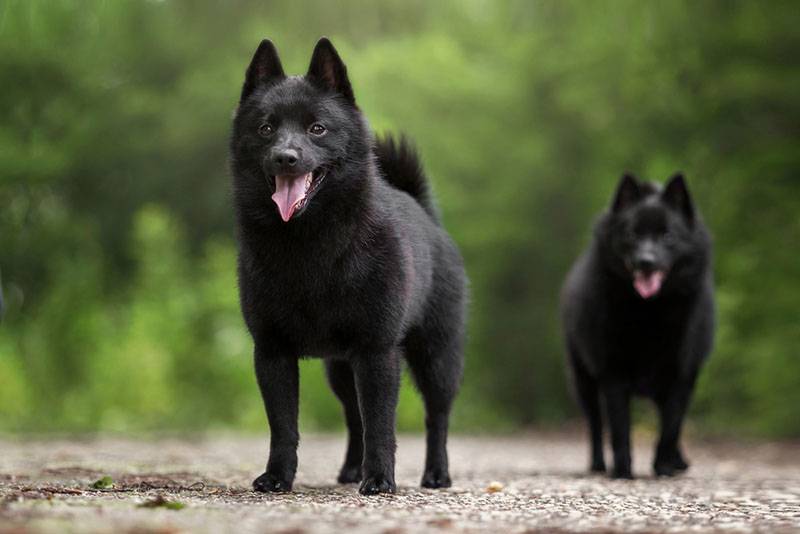
Who is this breed for?
Schipperke is a breed that is suitable for dog breeders planning to have a pet:
- For a city apartment;
- Very reminiscent of the character of a service shepherd;
- mobile and active;
- With excellent guard instinct;
- Succeeds in many types of dog sports;
- Not prone to serious illness.
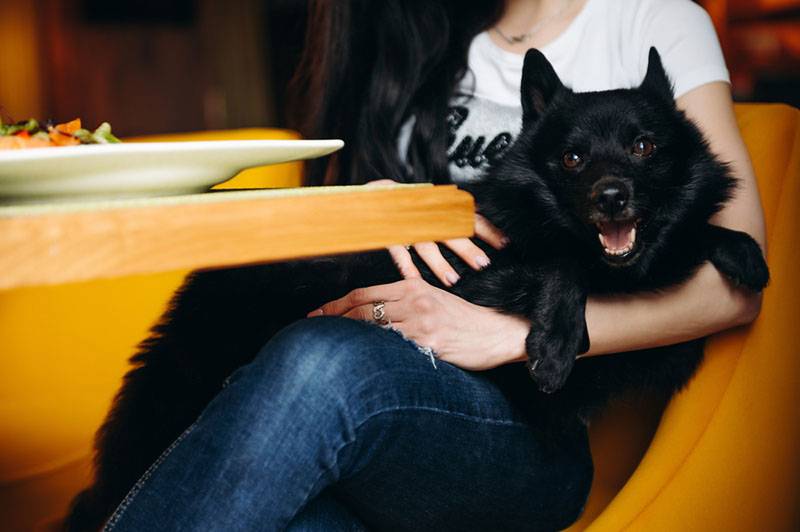
These dogs are not suitable for people who do not want:
- A lot of time to devote to physical exercises and mental stress;
- Get a pet that does not tolerate loneliness;
- Brush your hair several times a week.
Most importantly, Schipperke needs an active owner. A homebody cannot be its owner. This person should be athletic, love outdoor recreation.
The owner can be both single and family. Schipperke children are very fond of and tolerate them.
Since the breed tends to be stubborn and self-willed, the owner must be a leader and “leader of the pack.” Only in this case, the Schipperke will behave obediently.
How to choose a puppy
Before choosing a particular breed, learn as much information as possible about it. Read literature, talk to dog breeders, cynologists, breeders. Visit exhibitions.
If you understand that you can handle this active and athletic dog, you can devote enough time to it, then start looking for a breeder.
You can buy a puppy both in the kennel and from a private breeder. The main thing is that the specialist works honestly, not allowing individuals with serious types of diseases to be bred.
If you need a dog that will take part in exhibitions, then having a pedigree is extremely important. It is also required that its exterior conform to the breed standard. Ask the breeder to show you the baby’s parents. Study their documents if possible.
If you are getting a family pet, then it is enough just to choose a healthy puppy with a balanced psyche.
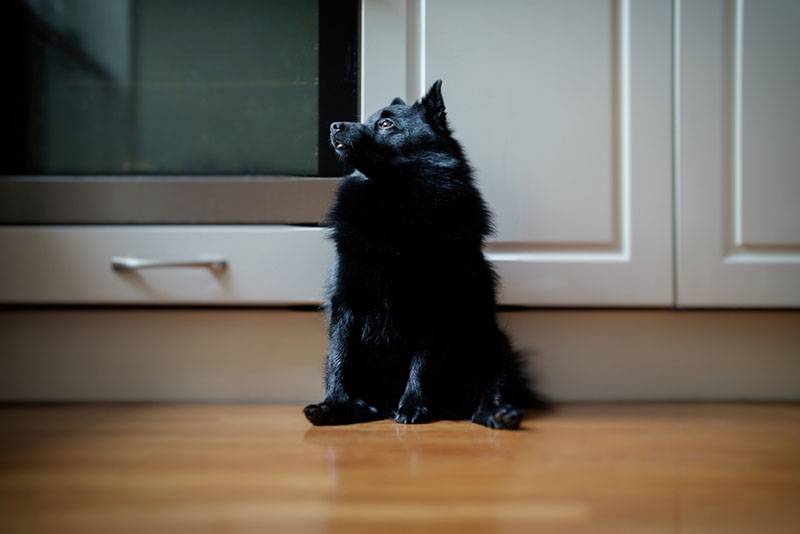
Be sure to inspect the room in which the litter is kept. It cannot be unkempt, dirty. The appearance of puppies is also important. A conscientious breeder washes them regularly.
Healthy dogs are active and sociable. They don’t hide behind their mother when they see a stranger. They eat well and play with each other.
Examine their eyes, ears, nose. There can be no signs of inflammation, redness on them. The abdomen should be soft, not tight. A dense belly most often indicates infection of the litter with worms .
A puppy with a pedigree has a whole package of documents: a metric and a veterinary passport containing all the information about the dog.
Kennels usually put a brand on their wards – in the ear or in the groin area. Now, more and more often, instead of a stigma, a chip is implanted.
Do not hesitate to ask the breeder questions about the maintenance of the pet, its parents, nutrition. Professional breeders are always willing to contact, answer any questions. They are far from indifferent to the fate of their puppies.
Photos of Schipperke puppies
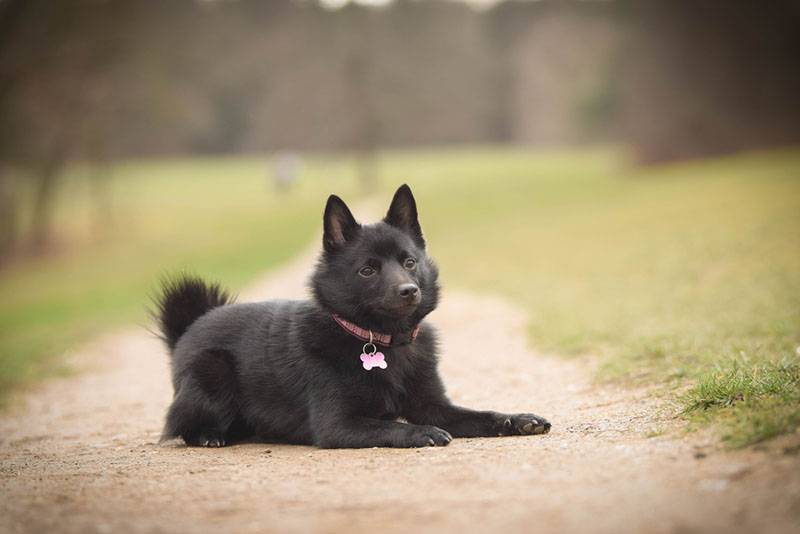
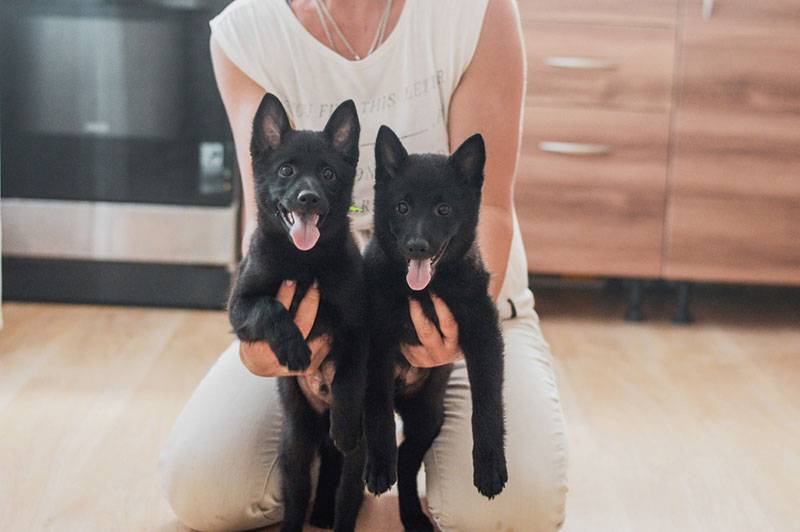
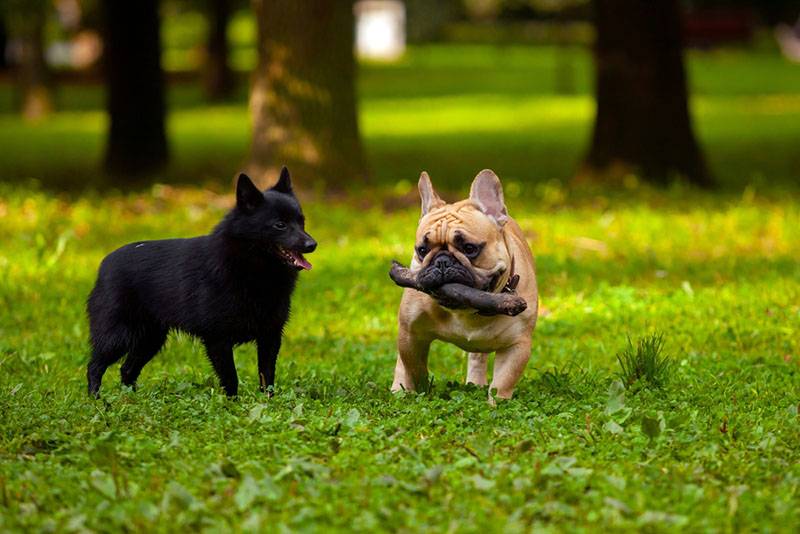
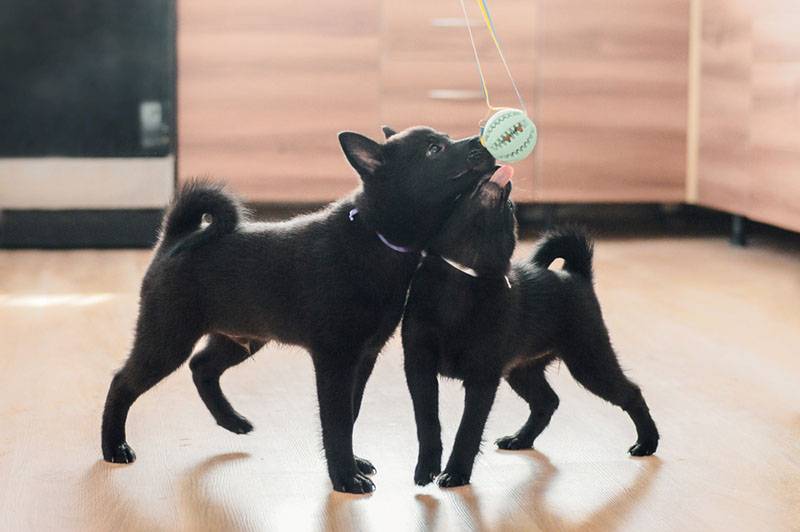
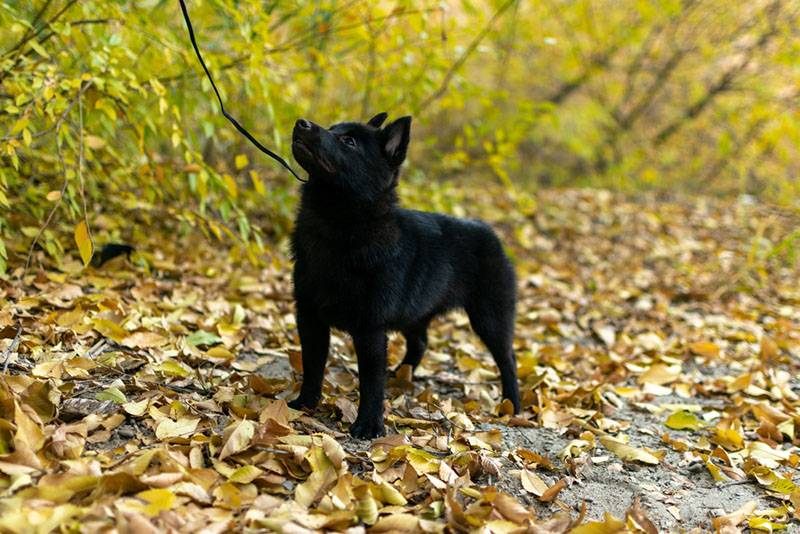
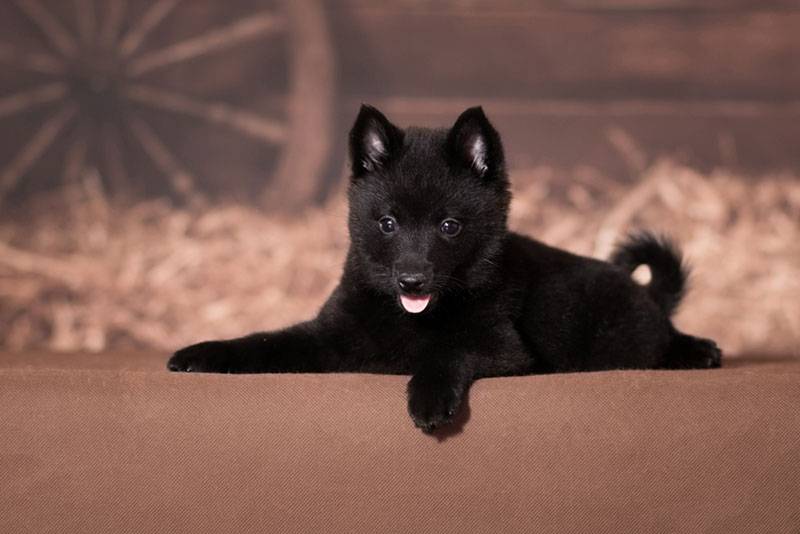
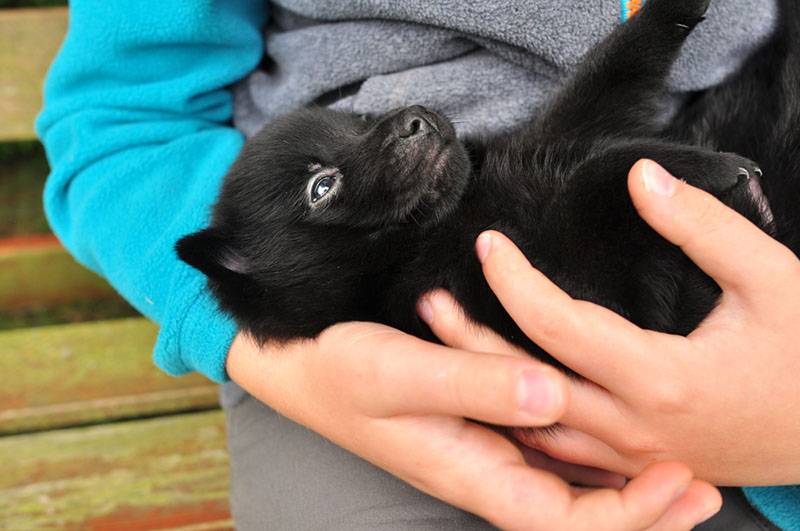
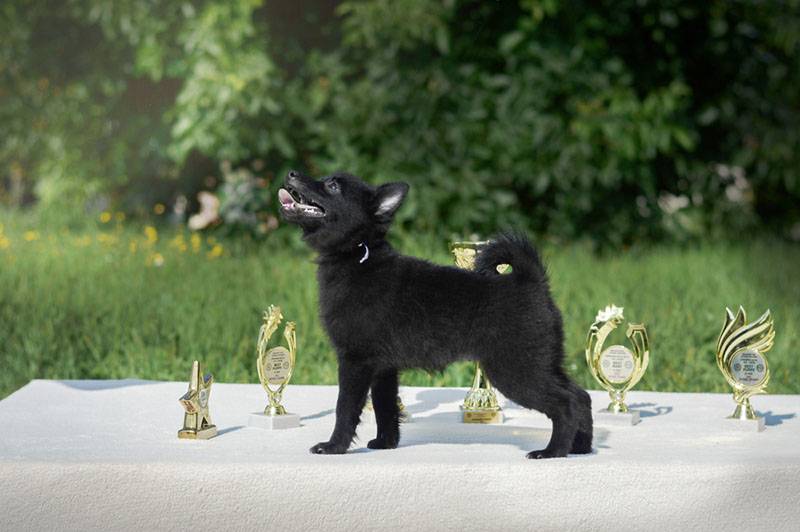
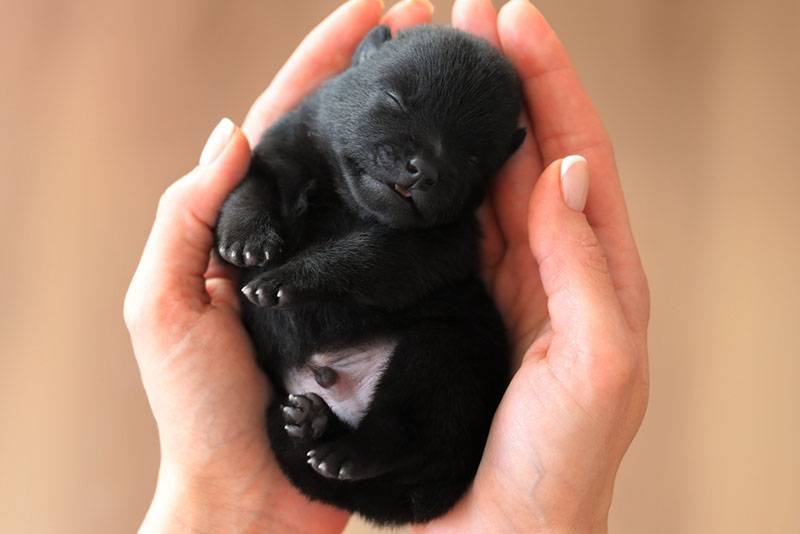
Owner experience
Having studied in detail the reviews of the owners of this breed, we made the following conclusions. Dog breeders count their dogs:
- Active and sporty;
- Very smart;
- Easily trainable;
- Friendly, getting along with other pets;
- Excellent watchmen.
The owners note that Schipperke need regular physical activity, and very long. Otherwise, the dog will destroy the house. The burst of energy is essential.
Sometimes they are prone to self-will. Especially males. That is why in the process of education, the owner must have patience and try to become a real leader. The pet will always listen to the one he considers the main one in the house.
Schipperkes are very playful. They love children. Happy to support any active game.
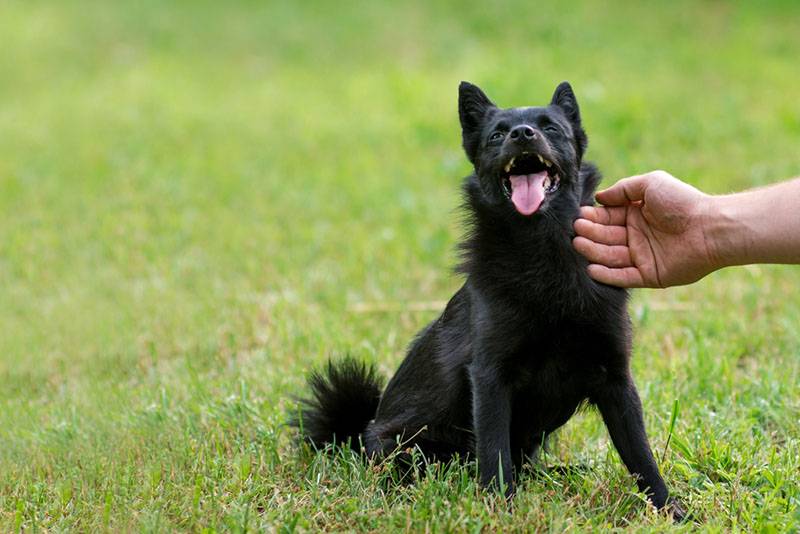
They love to bark. Moreover, the barking is not too sonorous, more like the barking of a large animal.
According to dog breeders, the breed does not have any special health problems. They are not prone to allergic reactions, colds, skeletal problems.
Thanks to well-developed guarding instincts, such a dog is not very fond of strangers. He treats guests with restraint, but at the same time wary. During the walk, he will not approach strangers.
Males look larger and more massive than females. Their coat is usually noticeably thicker.
They get along well with other pets, especially if they grew up in the same house since childhood. Other people’s cats can sometimes be chased.
Owners do not recommend starting this breed for sedentary older people, as they will not cope with it. Dogs need regular, very active exercise to keep them in shape.
Schipperke cost
After contacting some Schipperke breeders, we found out what the cost of puppies is.
The price tag depends on whether the animal has a pedigree, the sex of the baby (females are more expensive), as well as on the experience of the breeder.
In professional nurseries, the cost is always higher – from 30 to 70 thousand rubles. Puppies suitable for participation in exhibitions, born from titled parents can cost 80-100 thousand.
Private breeders have a much lower price tag – 10-20 thousand. Puppies with documents will cost more – 30-35 thousand rubles.
Schipperke – Video





